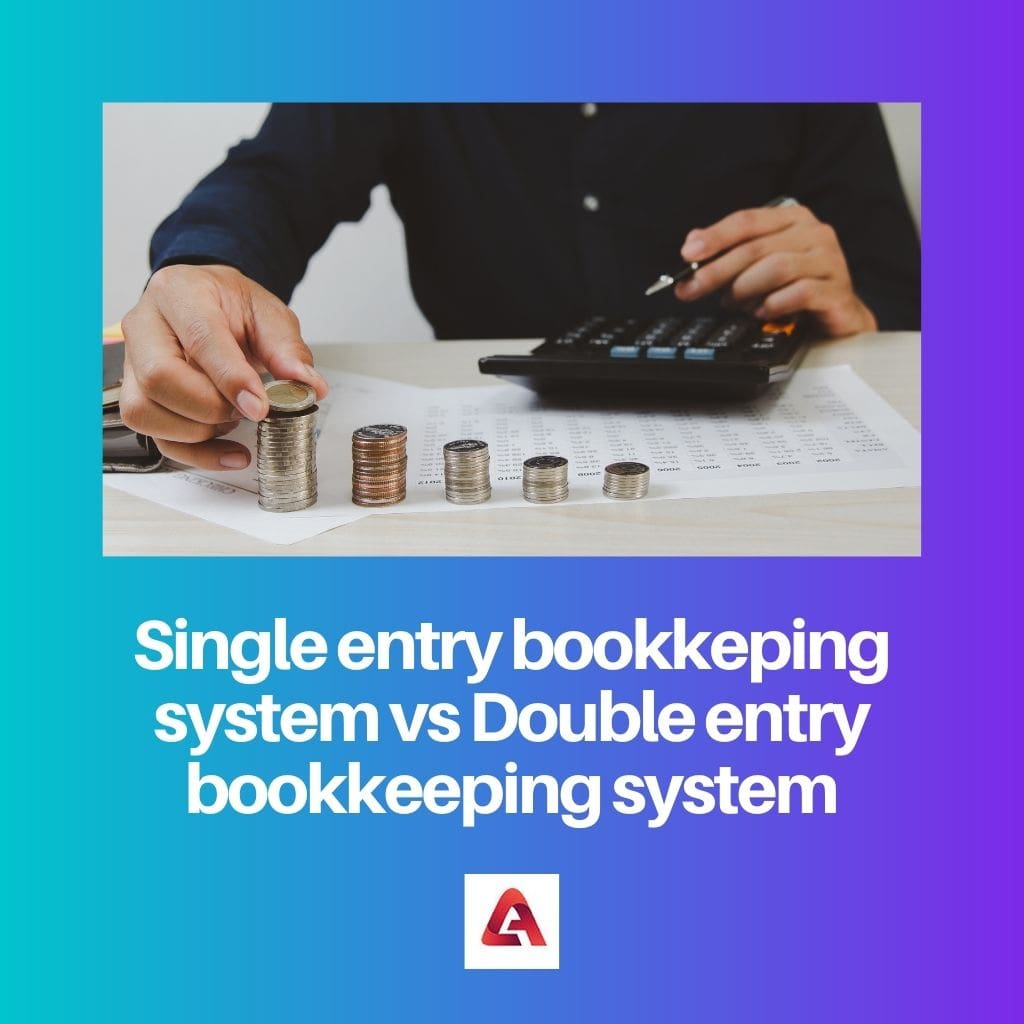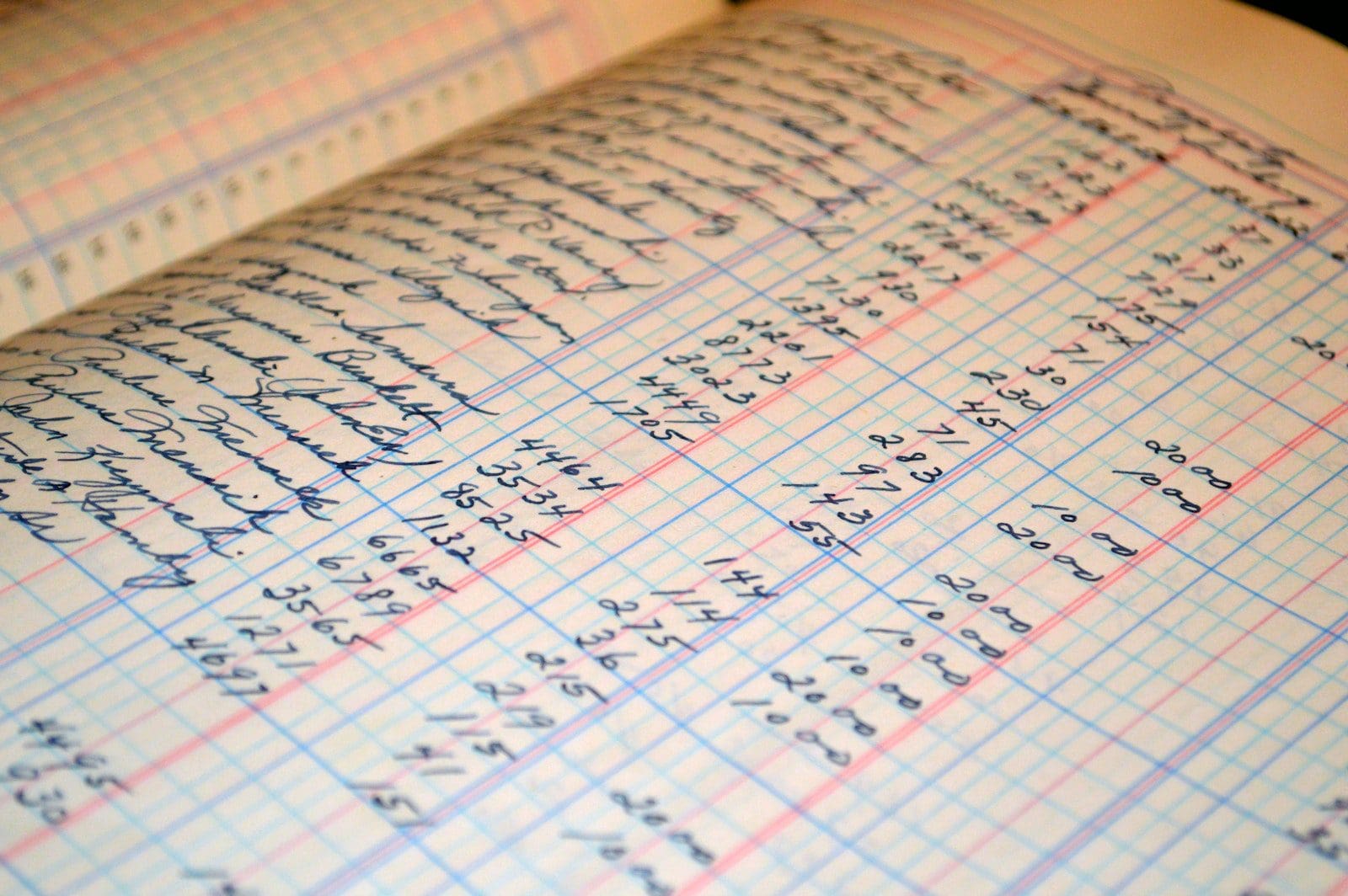Keeping track of expenses is essential; it could also be in the form of an entry system that is recorded in journals or books, titled bookkeeping.
Bookkeeping is pivotal in maintaining accurate financial statements. Maintaining a record of the expenses lets us know about the transactions and helps set a budget to manage further income and expenses.
Bookkeeping makes tax preparation very easy with proper management of records of credits and debits so that there is no hustle in finding old invoices, receipts or statements because they are already documented in the bookkeeping.
Key Takeaways
- Single-entry bookkeeping is a simpler system, recording only one entry per transaction, as an income or an expense.
- Double-entry bookkeeping is a more comprehensive system, recording each transaction twice as a debit and a credit in corresponding accounts.
- Single-entry and double-entry bookkeeping systems help businesses maintain financial records, but double-entry bookkeeping provides a more accurate and complete picture of a company’s financial health.
Single Entry Bookkeeping System vs Double Entry Bookkeeping System
Single-entry bookkeeping is a method where each financial transaction is recorded only once as an income or an expense. It does not keep track of any other transaction. Double-entry bookkeeping, is a system where each financial transaction is recorded twice, as both a debit and a credit entry.

Comparison Table
| Parameters of Comparison | Single Entry Bookkeeping System | Double Entry Bookkeeping System |
|---|---|---|
| User | Any sole businessman, small cooperation | Used by Large cooperation. |
| Records | This records cash transactions only, thus known as incomplete records | Cash, Credit & Debit transactions, therefore known as complete records |
| Accounts | It can maintain personal accounts of vendors and cashbook | It can maintain all nominal, real-time and personal accounts |
| Acceptance | Tax authorities do not accept this type of record, but some vendors or investors accept single entry types. | Tax authorities willingly accept a double-entry system due to systematic accounting. |
| Trial Balance | Preparing trial balance is difficult as the records are incomplete | Preparing the trial balance is easier as the records are complete |
What is Single Entry Bookkeeping System?
A single-entry system in computation or accounting is a bookkeeping method where any company’s financial records and transactions are infiltrated as a single entry in a logbook.
Since the single-entry system offers great convenience, many small business proprietors use them as a financial check keeper.
Companies with a few employees and basic cash accounting can conveniently use this bookkeeping system that comes free of cost.
A typical single-entry cashbook includes information like Date, Description, Transaction (Debit/ Credit), and Final balance value.
All this information about the clients or vendors helps the accountant track all the existing activities with a particular client.
Reconciliation of accounts is a bit difficult with a single-entry system due to its nature of single-sided entry in the logbook. The possibility of errors and extortions is higher, and thus this method does not comply with the standards of GAAP.
Yet, many sole businessmen and their partners prefer using a single-entry system for their financial track of each growing year.

What is Double Entry Bookkeeping System?
A double-entry system in accounting is a bookkeeping system where all the company’s financial transactions are recorded as a dual entry in the log, i.e. one account is credited, and the other is debited.
The double entry system is used worldwide by many MNCs, massive Healthcare corporations and medium-sized businesses for its great convenience, and the companies that have a large number of employees
with various departments preferring a double-entry system for their financial record track.
The logbook of the double entry system includes information like Date, Credit& Debit amount, and Total balance value. The Double-entry system works on the principle of Duality and accounting equations;
Liabilities + Owner’s investment= Assets
Reconciliation of accounts is straightforward in the case of a Double entry system because the records are complete and systematic.

Main Differences Between Single Entry Bookkeeping System and Double Entry Bookkeeping System
- Aspects: Single entry system is a bookkeeping system in which only one type of aspect of the transaction can be recorded at a time, either credit or debit. A double-entry system is a type of bookkeeping system where both aspects can be recorded at a single time.
- Complexity: Single entry system is easy, and anyone without prior accounting knowledge can use it, whereas a Double entry system is highly complex, and only experts in accounting can handle this system.
- Account: The single-entry system maintains only personal and cash accounts. All personal, nominal and real accounts can be maintained in the Double entry system.
- Fraudulent: The chances of fraud and cheating in money are higher in a single-entry system due to incomplete records. On the other hand, fraud cases are negligible because they have complete records and identifying frauds is easy.
- Trial Balance: Data for preparing trial balance or financial reporting in a single entry system isn’t enough, whereas companies with a Double entry system can easily track their profit and loss statements because they have complete data of transactional records.

- https://www.sciencedirect.com/science/article/pii/S0361368201000605
- https://vulms.vu.edu.pk/Courses/FIN611/Downloads/Notes%20on%20the%20Origin%20of%20Double%20entry%20Bookkeeping.pdf

This article provides an insightful overview of single-entry and double-entry bookkeeping systems, highlighting their benefits and differences. Very informative!
I totally agree. The clear comparison table is especially helpful in understanding the nuances of each system.
The understanding of the differences between single-entry and double-entry systems is greatly enhanced by this detailed analysis. I’m impressed.
Absolutely! This article leaves no stone unturned in explaining the intricacies of both systems. Excellent work!
The discussion about fraud probabilities in single-entry bookkeeping is concerning, raising doubts about its reliability and credibility.
Absolutely right. It’s important to consider the potential risks associated with the chosen bookkeeping method.
I’m not convinced by the benefits of double-entry bookkeeping. It seems overly complex and unnecessary for small businesses.
The point about the acceptability of single-entry and double-entry bookkeeping systems by tax authorities is a crucial distinction. It sheds light on the legal aspects of these methods.
Absolutely, understanding the implications of these systems from a tax perspective is essential for businesses to make informed choices.
I couldn’t agree more. This aspect is overlooked but plays a pivotal role in regulatory compliance.
The article presents a compelling argument for the advantages of a double-entry bookkeeping system over single-entry. The comprehensive comparison is enlightening.
Absolutely! The article offers a balanced view of both systems, but it’s clear that the double-entry method provides more comprehensive financial insights.
Indeed, this thorough analysis makes a strong case for the superiority of a double-entry system in maintaining accurate financial records.
This post offers a comprehensive comparison between single-entry and double-entry bookkeeping systems. I appreciate the practical examples provided.
Yes, the real-world applications of these systems make it easier to grasp their importance. Great article!
I found the discussion on fraud and cheating probability in single-entry bookkeeping quite intriguing. It raises questions about its reliability.
Definitely! The risks associated with single-entry bookkeeping are concerning, especially for businesses aiming to maintain accurate financial records.
Agreed. The article highlighted some critical issues that are overlooked in favor of ease of use.
The article’s in-depth exploration of single-entry and double-entry bookkeeping methods is commendable. It offers valuable insights for businesses of all sizes.
Yes, this in-depth analysis provides clarity on the suitability of each system based on the scale and complexity of a business. Valuable information!
I agree. The article does a great job of breaking down the advantages and considerations for both bookkeeping systems.
The article effectively breaks down the complexities of single-entry and double-entry systems, making it accessible even for those new to bookkeeping.
I completely agree. The clarity and simplicity in explaining complex concepts are truly commendable.
Absolutely! It’s great to see such a thorough explanation of these systems without overwhelming the reader with technical jargon.